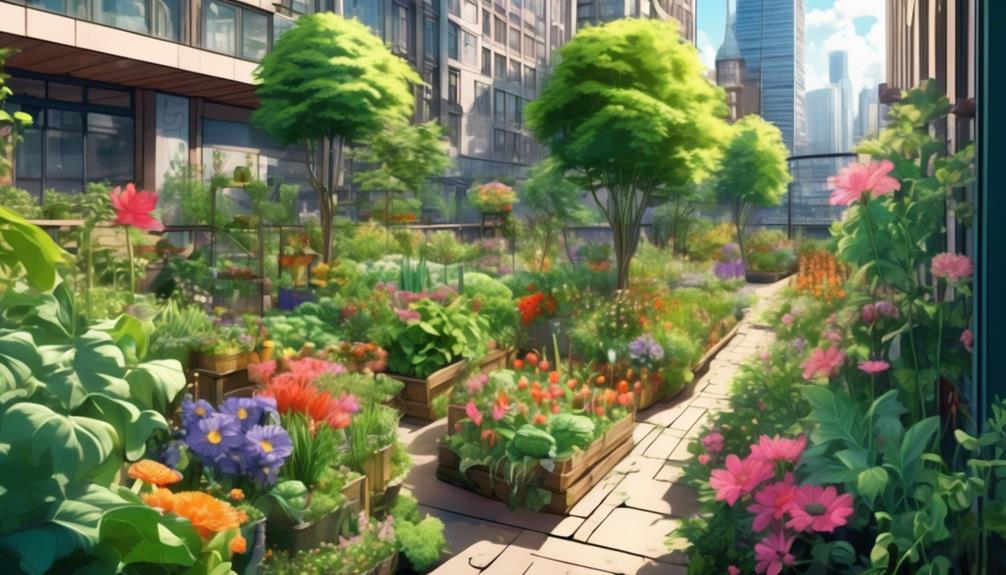How To Become More Self-Sufficient Without Starting a Full-Blown Farm…
Want to start preserving your harvest, making your own soap, or building a backyard root cellar — but not sure where to begin? “Homesteading Advice” gives you instant lifetime access to 35+ practical homesteading books on food preservation, veggie gardening, DIY natural cleaning products (save over $250 per year with this skill alone), brewing, off-grid energy, and a whole lot more…
Click Here To Check It Out Now!
Gardening Statistics for 2024 in the United Kingdom shed light on the verdant world of household horticulture. With 87% of households boasting a garden, it seems that the allure of cultivating nature’s bounty remains strong.
However, lurking amidst the greenery are pockets of barrenness, as 1 in 8 households find themselves devoid of a garden. London, in particular, bears the burden of this deficiency, with 1 in 5 households bereft of a green oasis.
But what factors contribute to these disparities, and what other intriguing insights lie beneath the surface of these statistics? Prepare to uncover the secrets of the UK’s gardening landscape and discover why it continues to captivate the nation.
UK Gardening…
- 87% of UK households have a garden, but 1 in 8 British households and 1 in 5 London households don’t have a garden, indicating disparities in garden ownership.
- The desire for fresh and organic produce drives the popularity of vegetable patches, with 28% of people in the UK having a vegetable patch in their garden.
- The age group of 65 and over spends the most on gardening products, reflecting their higher spending power and commitment to maintaining gardens.
- Gardening is most popular with those aged 55 and over, with over 51% of individuals in this age group enjoying gardening, highlighting its popularity as a hobby among older people.
UK Household Garden Engagement
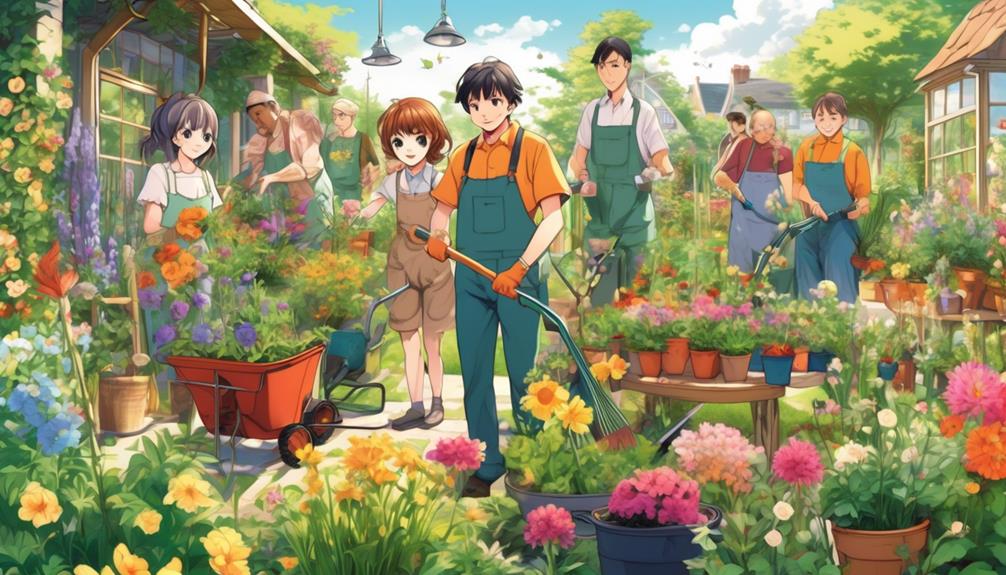
UK household garden engagement is a significant aspect of gardening statistics, with a high percentage of households actively participating in various gardening activities.
According to recent data, 87% of UK households have a garden, indicating a strong desire for green spaces and a connection to nature. However, it’s worth noting that 1 in 8 British households doesn’t have a garden, with this number increasing to 1 in 5 households in London.
Factors such as occupation and employment status also influence garden ownership, with those in unskilled occupations or unemployed being 3 times less likely to have a garden compared to those in professional occupations (1).
Vegetable Patch in UK Gardens
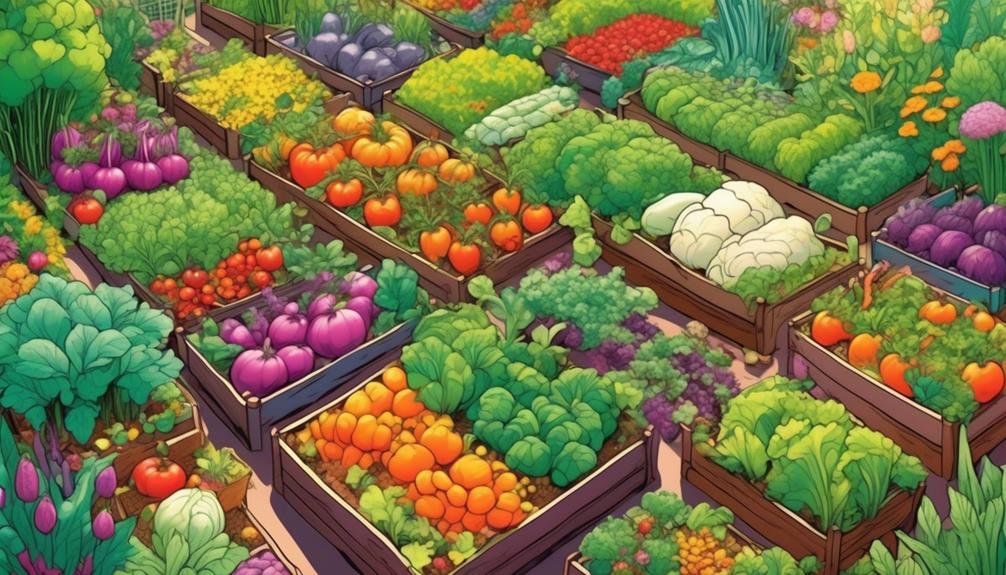
While gardening engagement in UK households is significant, a notable portion of individuals also prioritize growing their own produce, evident by the 28% of people in the country who have a vegetable patch in their garden.
This trend reflects the desire for self-sufficiency and a connection to nature. The popularity of vegetable patches can be attributed to several factors, including the desire for fresh and organic produce, the joy of harvesting one’s own food, the cost-saving benefits, and the satisfaction of knowing exactly where the food comes from.
Interestingly, whilst having a vegetable patch was the most popular trend in 2021, owning garden gnomes was the second most popular, with 15% of respondents reportedly stating that they owned at least one (2).
Spending on Gardening Products in the UK

The expenditure on gardening products in the United Kingdom is projected to exceed £6.5 billion by 2025, reflecting a significant investment in enhancing outdoor spaces and cultivating greenery. This is a substantial increase from the £4.9 billion spent in 2020.
Interestingly, it’s the age group of 65 and over that spends the most on gardening products, averaging around £5.10 per week. Additionally, 61% of consumers base their purchase of compost medium on price.
With an average garden size of 188m², it’s clear that spending on gardening products in the UK is a popular and growing trend (3).
Age Group Preference for Gardening

The preference for gardening in different age groups is evident, with those aged 55 and over comprising the highest percentage of individuals who enjoy cultivating their outdoor spaces.
- Gardening is most popular with those aged 55 and over, with 51.42% stating that they enjoy gardening.
- Less than 30% of those in the youngest age bracket state that they like to garden.
- Older people are more likely to enjoy gardening and participate in it as a hobby.
- 51.42% of individuals aged 55 and older state that they enjoy gardening, making it the most popular among this age group (4).
Homegrown Herbs, Fruit, and Vegetables in the UK
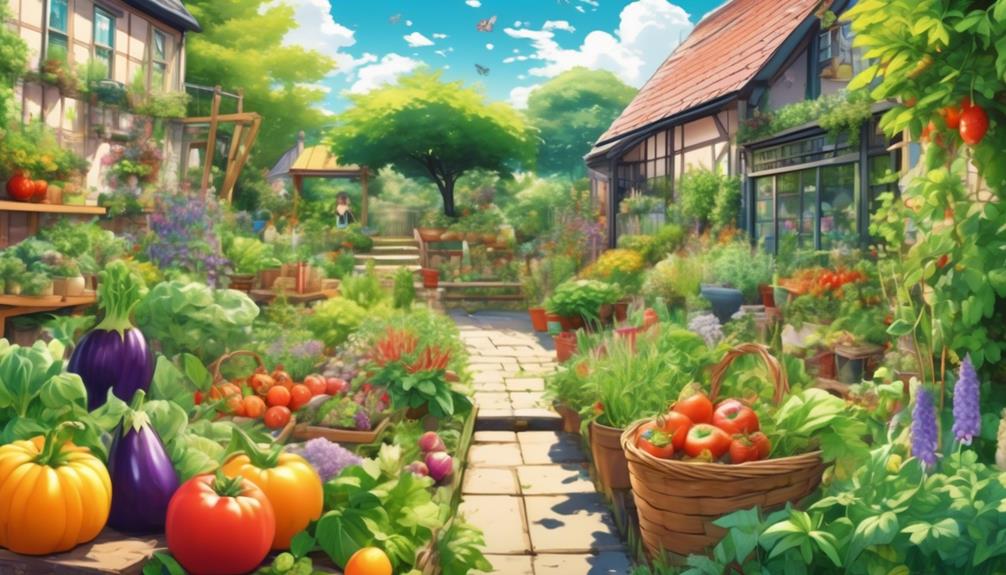
With a significant percentage of individuals aged 55 and over enjoying gardening as their preferred outdoor activity, it’s no surprise that a considerable portion of them also engage in growing their own herbs, fruit, and vegetables in the UK.
In fact, 36% of individuals in the UK currently cultivate their own homegrown herbs, fruit, and vegetables. This trend reflects a growing interest in sustainable living and a desire to have fresh, organic produce readily available (5).
Wildlife-Friendly Gardens in the UK
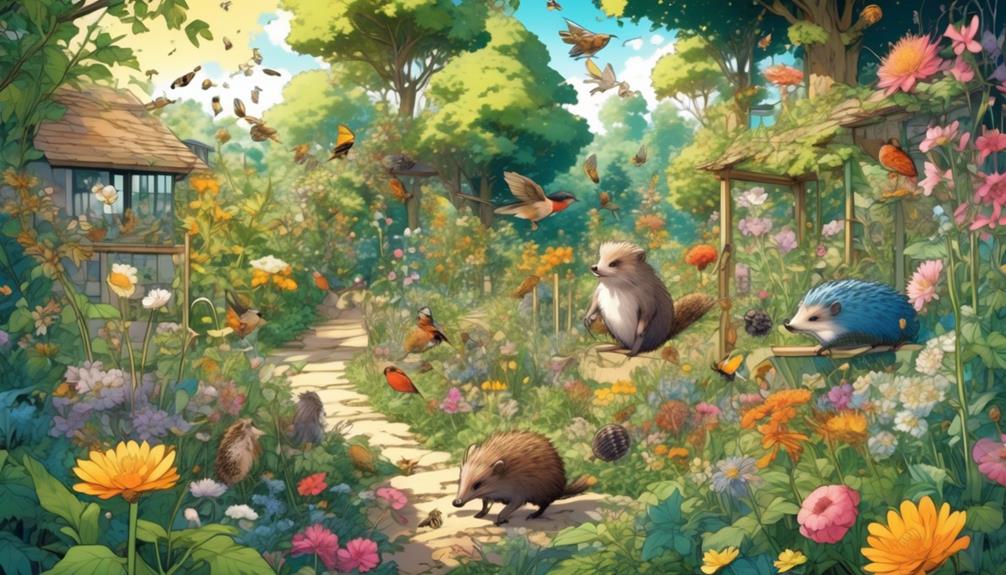
Wildlife-friendly gardening practices have become increasingly popular in the UK. There is a strong focus on creating habitats and providing natural food sources for a variety of wildlife species.
This is evident as 87% of individuals in the UK express a desire to bring more wildlife to their gardens. Additionally, 36% of UK individuals grow their own herbs, fruit, or vegetables in their gardens. This not only benefits the individuals themselves but also provides a food source for wildlife.
Moreover, 86% of UK gardeners actively help wildlife in their gardens by feeding them or providing shelter. These efforts contribute to the overall well-being and survival of various wildlife species.
Wildlife-friendly gardening practices encompass a range of activities, such as planting pollinator-friendly flowers and creating habitats for birds, hedgehogs, and other wildlife. These practices are essential for maintaining and promoting biodiversity in urban areas (6).
Shift Towards Organic and Eco-Friendly Garden Products
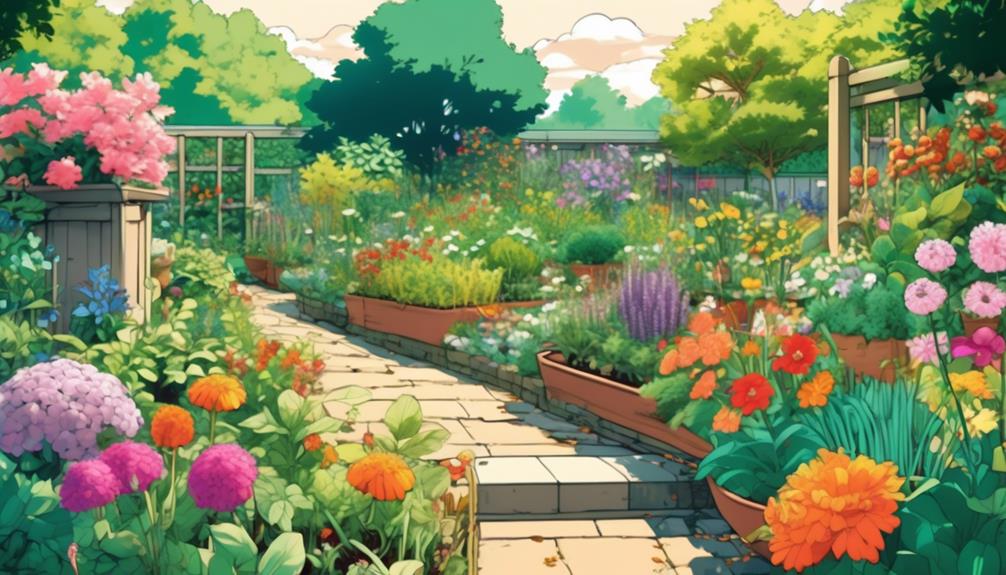
The shift towards organic and eco-friendly garden products is evident in the growing adoption of sustainable practices and the increasing use of technology in gardening.
There’s a strong focus on organic gardening methods, composting, rainwater harvesting, and natural pest control. The trend towards vertical gardening, urban gardening, and sustainable practices reflects a rising interest in eco-friendly and space-efficient solutions.
Technology is also being integrated into gardening practices, with the use of smart tools, automated irrigation systems, gardening apps, and sensors to monitor soil moisture and plant health (6).
Age Group Spending on Gardening Products
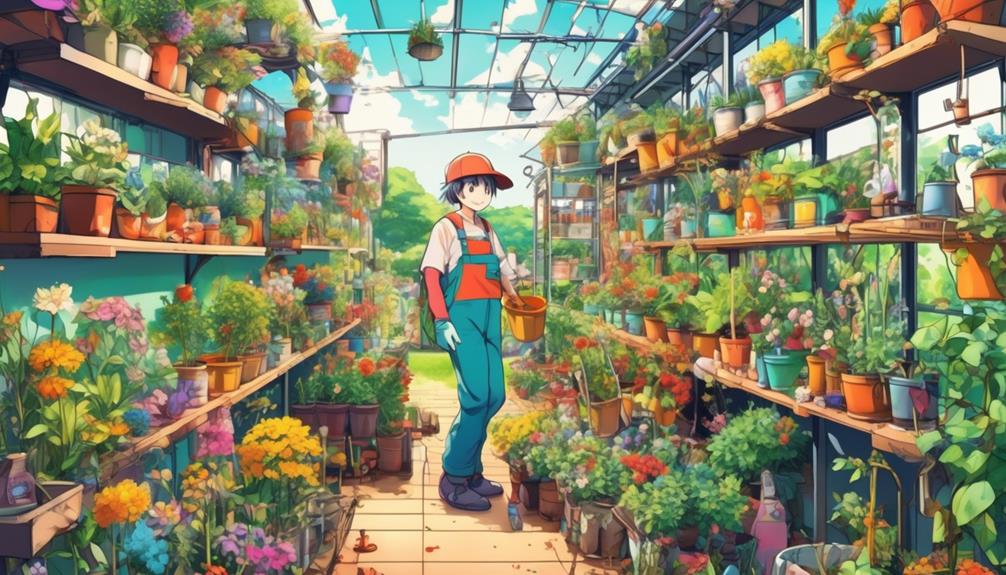
As the trend towards organic and eco-friendly garden products continues to gain momentum, it’s worth noting that the age group that spends the most on gardening products in the UK is those aged 65 and over, with an average weekly expenditure of around £5.10.
This demographic holds the highest spending power when it comes to gardening, indicating their strong interest and commitment to maintaining their gardens.
The age group of 50-64 years closely followed, allocating an average weekly expenditure of £4.50 on gardening products. In contrast, the youngest demographic spent just below £2 per week on average for similar purchases (7).
Average UK Garden Size
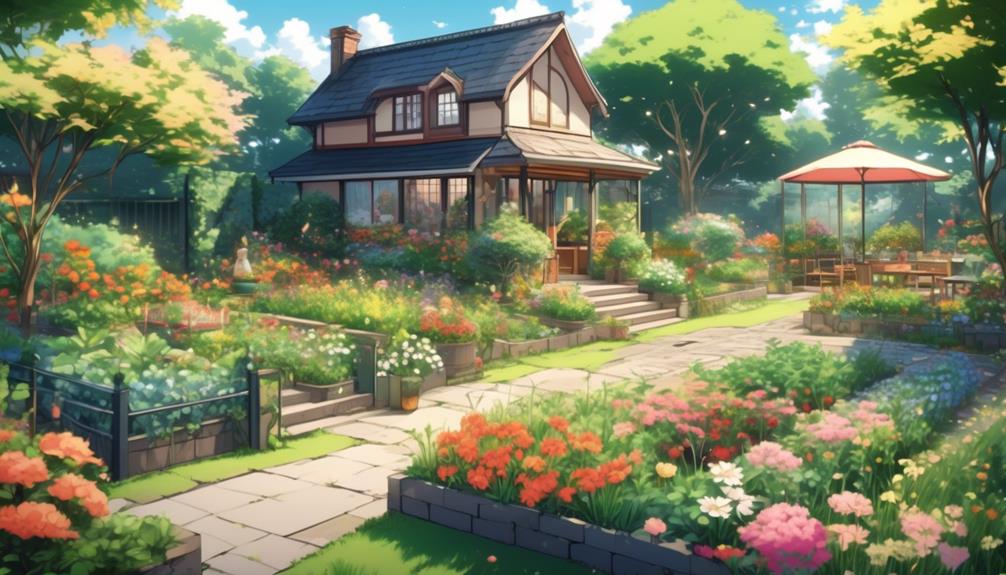
With an average size of 188m², gardens in the UK are diverse in their dimensions and provide ample space for a variety of outdoor activities.
However, it’s important to note that not all households in the UK have access to a garden. In fact, 1 in 8 British households do not have a garden, and this number rises to 1 in 5 households in London.
This means that individuals without a private garden are more likely to live closer to a public park. Additionally, those in unskilled occupations or who are unemployed are 3 times less likely to have a garden compared to those in professional occupations (1).
| Fact | Statistic |
|---|---|
| Average UK garden size | 188m² |
| British households | 1 in 8 has no garden |
| London households | 1 in 5 has no garden |
| Access to public parks | Individuals without gardens live closer |
| Occupation and gardens | Unskilled/unemployed less likely to have one |
UK’s Favorite Garden Flower

After exploring the average UK garden size and the factors that influence access to gardens, it’s now time to delve into the UK’s favorite garden flower.
According to 2017 statistics, the rose takes the top spot as the most loved garden flower in the UK. This classic and timeless flower has captured the hearts of gardeners across the country. Its beauty, fragrance, and versatility make it a popular choice for adding color and elegance to any garden.
Lilies, tulips, daffodils, and sunflowers secured positions within the top 5, while daisies, irises, snapdragons, and various others ranked among the top 30.
It was discovered that despite being the preferred flower, 33% of respondents were unaware that the rose holds the distinction of being the national flower of England.
Additionally, the study revealed that 3 out of 10 participants considered presenting flowers as the most effective means of lifting someone’s spirits (8).
Reduction of Lawn Size in UK Gardens
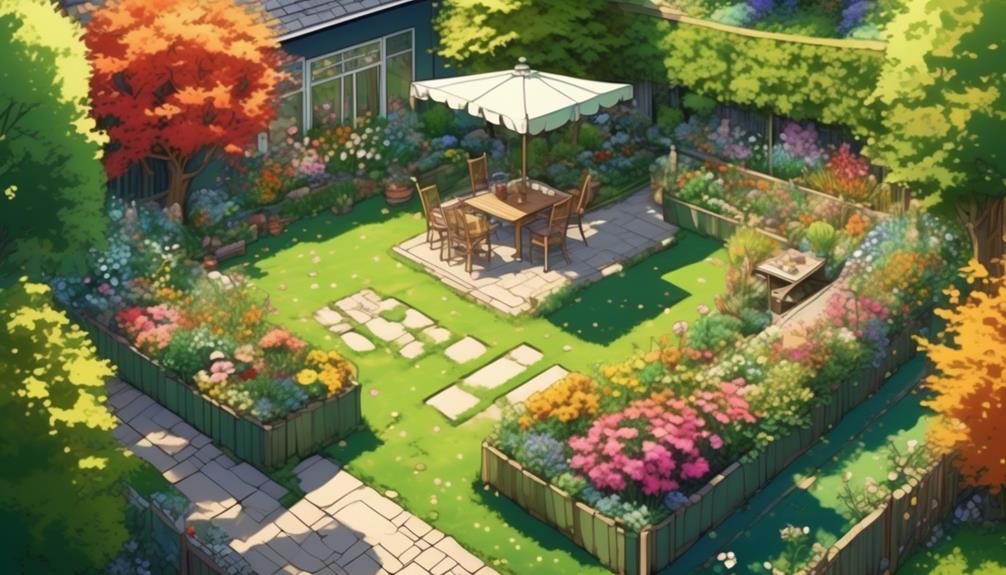
The reduction of lawn size is a growing trend in UK gardens.
In 2016, 22% of UK gardeners replaced their lawns with other garden features.
This shift towards smaller lawns is part of a broader movement towards sustainable gardening practices, including organic methods and water conservation.
The trend is towards replacing lawns in favour of garden beds, flowers and shrubs. Vertical gardening, urban gardening, and the use of rainwater harvesting are also gaining popularity in the UK (9).
Popular Months for Starting Garden Projects in the UK

The most popular months for starting garden projects in the UK are typically during the spring and early summer seasons. During this time, the weather is milder, providing optimal conditions for gardening activities.
Garden enthusiasts in the UK eagerly await the arrival of March, as it marks the beginning of the gardening season.
Here are four popular months for starting garden projects in the UK:
- March: As the weather starts to warm up, gardeners begin preparing their gardens for the upcoming growing season.
- April: April brings longer days and more sunshine, making it an ideal time to start planting seeds and bulbs.
- May: With temperatures rising, May is a popular month for planting summer flowers and vegetables.
- June: As summer approaches, gardeners focus on maintaining their gardens, including regular watering, weeding, and pruning.
Among UK homeowners, 71% express a preference for cultivating flowering plants, and 58% intentionally nurture flowers recognized for their positive impact on pollinators (9).
Consumer Purchase Decision for Compost Medium
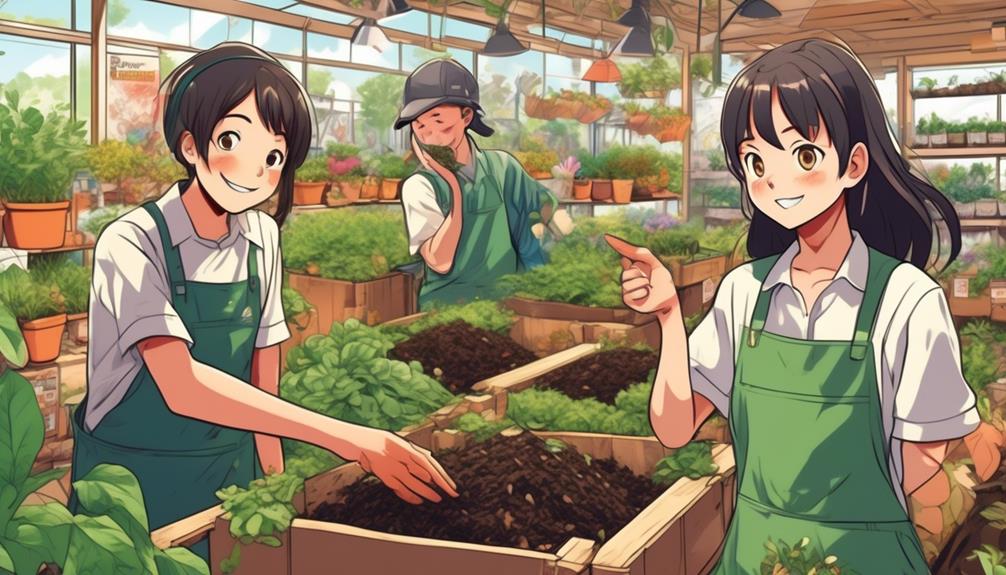
Consumers in the UK primarily base their purchase decision for compost medium on price, as evidenced by the fact that 61% of consumers consider price when buying compost medium.
This indicates that affordability is a significant factor influencing consumer choices in the gardening industry. However, it’s important to note that other factors, such as quality and sustainability, may also play a role in the decision-making process.
Understanding consumer preferences and the amount spent on compost medium can help businesses cater to the needs and desires of their target audience (10).
UK Garden Trends 2024
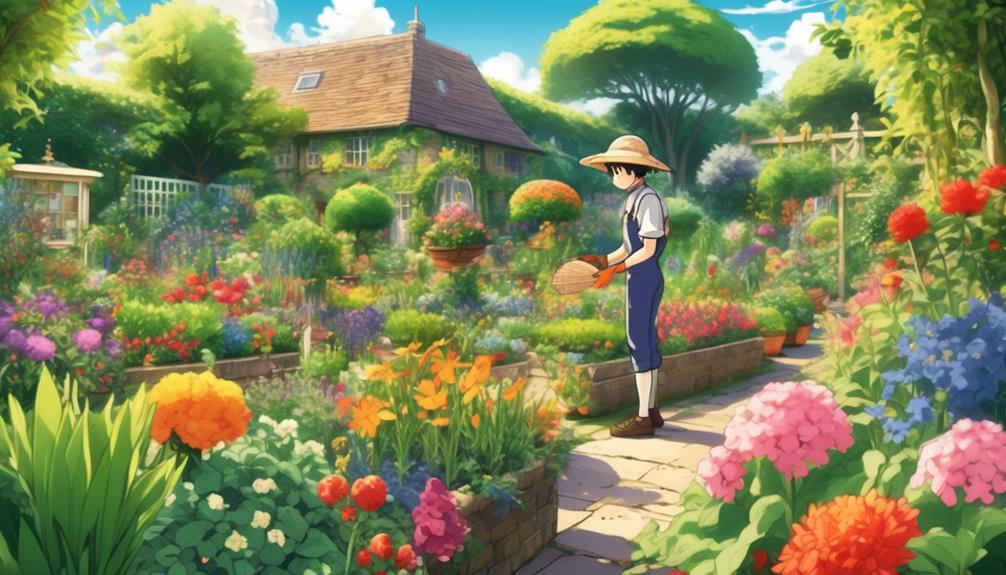
In 2024, UK garden trends are showcasing a rise in vegetable patches, a shift towards alternative garden features, and a strong desire to bring more wildlife into gardens.
According to recent data, 28% of people in the UK have a vegetable patch in their garden. This indicates a growing interest in homegrown produce and a desire for a more sustainable lifestyle.
Another trend is the reduction of lawns in gardens.
Approximately 22% of UK gardeners are reducing the size of their lawns and replacing them with other features. This could be due to a desire for lower maintenance gardens or a preference for alternative landscaping options such as flower beds, patios, or water features.
Furthermore, there is a strong desire among individuals in the UK to bring more wildlife into their gardens. A staggering 87% of people express this interest. This could be driven by a growing awareness of the declining wildlife population and the importance of creating habitats for various species.
It is encouraging to note that 86% of individuals actively help wildlife by providing food and shelter. This demonstrates a commitment to environmental conservation and a recognition of the role gardens can play in supporting biodiversity.
Frequently Asked Questions
What Is the Trend in Gardening in 2024?
New gardening techniques in 2024 include prioritizing pollinators, using dual-purpose edimentals (plants that are both ornamental and edible), embracing moody colors, maximizing vertical space, and creating outdoor living spaces. These trends reflect a shift towards sustainable and innovative practices.
What Percentage of People Garden in the Uk?
A significant percentage of people in the UK enjoy gardening and find it beneficial. It provides numerous advantages such as stress relief, improved mental health, and access to fresh produce.
How Many People in Britain Are ___ Gardening?
In Britain, a significant number of people are embracing vertical gardening. This innovative approach allows individuals to maximize their garden space by growing plants vertically, creating a stunning and efficient display.
Is the Gardening Industry Growing?
The gardening industry is experiencing growth due to gardening innovations. With more people seeking creative and sustainable ways to grow their own food, the industry is expected to expand in the coming years.
Overall…
The gardening statistics for 2024 in the UK highlight the widespread engagement and popularity of gardening among households. The data reveals the preference for vegetable patches, garden gnomes, and roses as well as the significant amount spent on gardening products.
These trends reflect the desire for individuals to connect with nature and cultivate their own green spaces. The statistics also demonstrate the social and economic factors that influence garden ownership. The future of gardening in the UK looks promising, with continued growth expected in the coming years.
About This Report:
This report is generated using the most recently available statics for the latest year they were generated. As a result, overall it reflects the general gardening trends in the United Kingdom for the current 2024 year. The report is updated annually to reflect any changes or additions based on more recent statistical updates.
Sources:
- 1. One in eight British households has no garden. (2020, May 14). Office for National Statistics: Census 2021. https://www.ons.gov.uk/economy/environmentalaccounts/articles/oneineightbritishhouseholdshasnogarden/2020-05-14
- 2. Statista Research Department. (2021, March 18). Top garden trends in the UK 2021. Statista. https://www.statista.com/statistics/1256234/top-garden-trends-in-the-uk/
- 3. Statista Research Department. (2021b, August 18). Total value sales of garden products in the United Kingdom (UK) in 2020, with a forecast for 2025. Statista. https://www.statista.com/statistics/1256689/total-value-sales-of-garden-products-in-the-uk/
- 4. Statista Research Department. (2021c, August 20). Share of the public that enjoy gardening in the United Kingdom (UK) as of December 2020, by age. Statista. Retrieved March 15, 2023, from https://www.statista.com/statistics/1254970/share-of-the-public-that-enjoy-gardening-by-age-uk/
- 5. Horticultural Trade Association. (2023a, January). State of the Market Report. https://hta.org.uk/media/2opg11yw/state-of-the-market-report-vf.pdf
- 6. Wyevale Garden Centres. (2018). Garden Trends Report. https://www.gardenforum.co.uk/media/articles/WGC%20Garden%20Trends%20Report%202018.pdf
- 7. Statista Research Department. (2023, August 21). Average weekly household expenditure on horticultural goods, garden equipment and plants in the United Kingdom (UK) in 2021, by age of household reference person. Statista. https://www.statista.com/statistics/285700/plants-and-garden-tools-weekly-uk-household-expenditure-by-age/
- 8. Bagot, M. (2017, May 21). Britain’s favourite flower has been revealed. The Mirror. https://www.mirror.co.uk/news/uk-news/britains-favourite-flower-been-revealed-10467227
- 9. Simmons, J. (2016, August 5). 12 Surprising Facts About UK Gardens and What We Do in Them. Houzz. https://www.houzz.co.uk/magazine/12-surprising-facts-about-uk-gardens-and-what-we-do-in-them-stsetivw-vs~69605966
- 10. The Sustainable Growing Media Task Force. (2012, June). Towards Sustainable Growing Media: Chairman’s Report and Roadmap. https://assets.publishing.service.gov.uk/government/uploads/system/uploads/attachment_data/file/221019/pb13867-towards-sustainable-growing-media.pdf
